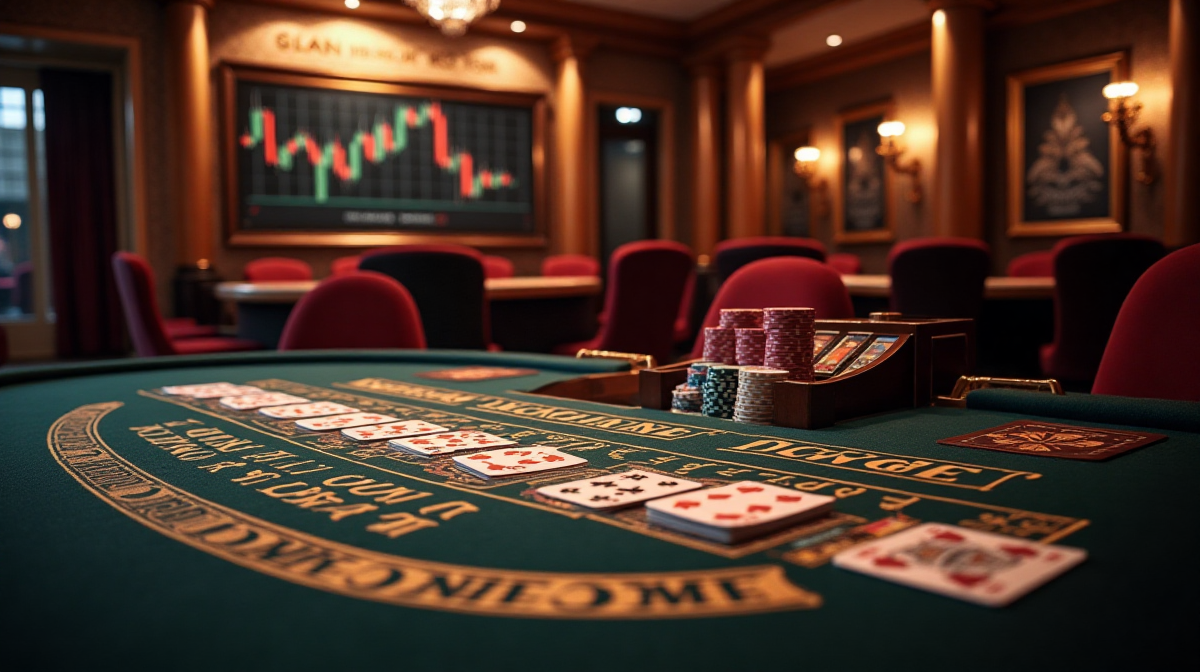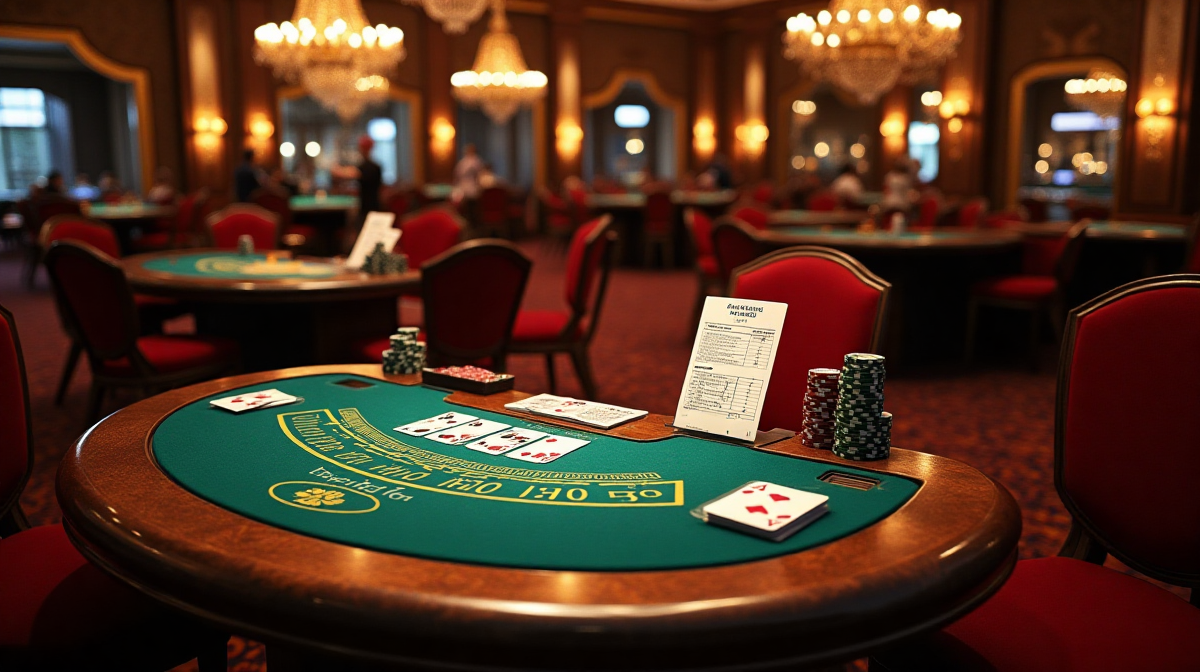Blackjack Table Strategy: Win Like a Pro!
Understanding the Game: Blackjack Basics
Blackjack, a staple in casinos worldwide, is a captivating game of skill and chance. The objective is simple: beat the dealer by having a hand value closer to 21 without exceeding it. Cards are valued as follows: number cards are worth their face value, face cards (Jack, Queen, King) are worth 10, and Aces can be worth 1 or 11. A key aspect of success lies in understanding the nuances of the blackjack table and employing a strategic approach. Many players also explore online platforms, sometimes looking for resources like betfuse prediction for today sure wins free, but a solid understanding of the game itself is paramount.
Why Strategy Matters: Beyond Luck
While luck plays a role in any casino game, blackjack is unique because strategic decisions significantly impact your odds. Unlike games based purely on chance, informed players can reduce the house edge and increase their potential for winning. Simply guessing or relying on intuition is a sure path to losses. Mastering a basic strategy chart is the first step toward consistent profitability. Furthermore, resources like betfuse football prediction today football highlight the importance of informed decision-making, a principle that translates directly to the blackjack table.

Dispelling Common Blackjack Myths
Many misconceptions surround blackjack. One common myth is that counting cards guarantees wins – while effective, it's complex and often detected. Another is that the dealer has a significant advantage, which is true without strategy, but can be minimized. Finally, some believe that hot or cold streaks exist, which is statistically incorrect; each hand is independent. Understanding these fallacies is crucial for rational play.
Basic Strategy Chart: Your Essential Guide
The basic strategy chart is a mathematically derived guide indicating the optimal action – hit, stand, double down, or split – for every possible player hand and dealer upcard.
Understanding Hand Values & Dealer Upcard
The chart considers your total hand value (the sum of your cards) and the dealer’s visible upcard. For example, if you have a hard 16 (a hand without an Ace counted as 11) and the dealer shows a 7, the chart will tell you to hit.
Hard Totals Strategy: When to Hit, Stand, Double Down, Split
Hard totals involve hands without an Ace being counted as 11. Generally, you’ll hit if your hand is 11 or less, and stand if it’s 17 or more. Doubling down is advantageous in certain situations, like when you have 11 against a dealer's low card. Splitting pairs can increase your potential winnings, but isn't always the right move. Some even look for betfuse related offers while playing.
Soft Totals Strategy: Adapting to Aces
Soft totals include hands with an Ace counted as 11. These hands offer more flexibility. For instance, a soft 18 (Ace-7) is often a good hand to stand on, while a soft 17 can be hit against certain dealer upcards.
Pair Splitting Strategy: Maximizing Your Potential
Splitting pairs – separating two cards of the same rank into two separate hands – can be a powerful tactic. Always split Aces and 8s. Avoid splitting 10s, as you already have a strong hand.
Importance of Memorization & Practice
Memorizing the basic strategy chart is vital. While you can use a chart at the blackjack casino, reliance on it slows down play and may not be allowed. Practice with online simulators or apps to internalize the correct decisions.
Utilizing Basic Strategy Tools
Numerous resources are available to aid your learning. Basic strategy charts are readily found online, and dedicated blackjack apps provide interactive practice.
Choosing the Right Table: Rules & Limits
Not all blackjack tables are created equal. Selecting the right table can significantly impact your odds.
Number of Decks: Impact on House Edge
The number of decks used affects the house edge. Single-deck blackjack generally offers the best odds, but is less common. Multiple-deck games are more prevalent, but the house edge increases with each additional deck.
Rules Variations: H17 vs. S17, Dealer Hitting/Standing on Soft 17, Double Down Restrictions
Different casinos have different rules. H17 means the dealer must hit on a soft 17, while S17 means they must stand. Dealer hitting on soft 17 increases the house edge. Restrictions on doubling down can also affect your strategy. Many players also explore platforms like betfuse for potential betting opportunities.
Minimum & Maximum Bets: Finding Your Comfortable Range
Consider the table's minimum and maximum bets. Choose a table where the stakes align with your bankroll and risk tolerance.
Effective Bankroll Management: Protecting Your Funds
Proper bankroll management is essential for long-term success.
Setting a Budget: Determine Your Risk Tolerance
Decide how much money you're willing to risk before you start playing. Never gamble with money you can't afford to lose.
Unit Sizing: How Much to Bet Per Hand
Determine a suitable unit size – a percentage of your bankroll – to bet per hand. A common recommendation is 1-2% of your bankroll.
Avoiding Chasing Losses: A Crucial Discipline
Don't increase your bets in an attempt to recoup losses. Chasing losses is a surefire way to deplete your bankroll quickly.
Card Counting: Basics & Techniques
Card counting involves tracking the ratio of high to low cards remaining in the deck to estimate the likelihood of favorable outcomes. Disclaimer: Card counting is not illegal, but casinos may ask you to stop playing if they suspect you're doing it.
High-Low System: A Popular Starting Point
The High-Low system is a relatively simple card counting method. Assign a value of +1 to cards 2-6, 0 to cards 7-9, and -1 to cards 10-Ace.
Running Count & True Count: Converting for Accuracy
The running count is the sum of all card values. The true count is the running count divided by the estimated number of decks remaining.
Bet Spreading: Adjusting Bets Based on Count
Increase your bets when the true count is positive (indicating more high cards) and decrease your bets when the true count is negative.
Shuffle Tracking: Identifying Untracked Cards
Shuffle tracking is an extremely difficult technique that involves tracking groups of cards through the shuffle to predict their location in the deck.
Team Play: Collaboration for Increased Advantage
Team play involves multiple players working together to count cards and signal information to each other. This practice carries significant risk and is often frowned upon by casinos.
Understanding Casino Rules & Policies
Familiarize yourself with the casino's rules and policies regarding blackjack.
Proper Table Etiquette: Respecting Dealers & Players
Be respectful to the dealer and other players. Follow proper etiquette, such as not touching your cards after they are dealt.
Responsible Gambling: Knowing Your Limits
Gamble responsibly and know your limits. If you feel like you're losing control, seek help.
Common Blackjack Mistakes to Avoid
Taking Insurance: Why It's Usually a Bad Bet
Insurance is a side bet that the dealer has blackjack. It's generally a poor bet with a high house edge.
Splitting Tens: A Mistake Most Players Make
Avoid splitting 10s, as you already have a strong hand.
Following Gut Feelings: Relying on Strategy Instead
Don't rely on intuition. Stick to the basic strategy chart.
Ignoring Bankroll Management: A Recipe for Disaster
Poor bankroll management is a common mistake that leads to substantial losses.
Continuous Learning & Adaptation
Blackjack is a game of continuous learning. Stay updated on new strategies and adapt to changing conditions.
Practice Makes Perfect: Honing Your Skills
Consistent practice is the key to mastering blackjack.

The Long-Term Perspective: Consistent Strategy, Consistent Results
Focus on the long-term. Consistent application of a sound strategy will yield positive results over time. Remember, even with strategy, responsible gaming and understanding resources like blackjack table strategy guides are crucial.

